Throughout British history, certain coins have transcended their status as mere currency, becoming the rarest coins in the UK. Coveted by collectors and historians alike, these extraordinary pieces tell the stories of monarchs, wars, and shifting economies. Below, we explore some of the rarest and most valuable coins ever struck in the United Kingdom.
1917 George V Gold Sovereign: A Survivor of War and Time
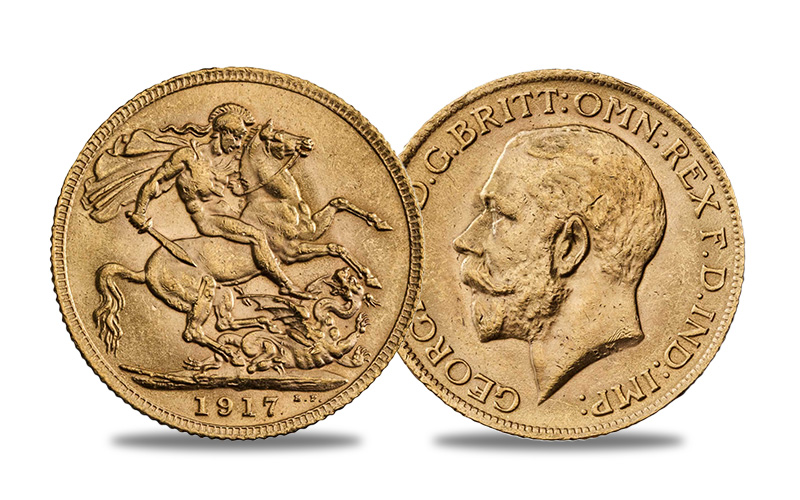
The 1917 Gold Sovereign, struck at the prestigious London Mint, stands as one of the rarest coins of the 20th century. It is an enduring relic of Britain’s resilience during World War I, when the government transferred vast reserves of gold overseas to settle debts with the United States. The majority of these coins were melted down, making any surviving example a true treasure of numismatic history.
Featuring Benedetto Pistrucci’s masterful St George and the Dragon design on the reverse and King George V’s regal portrait on the obverse, this sovereign is an exquisite fusion of art and history, a coin that has survived not only a global conflict but also the relentless melting pots of financial necessity.
1937 Edward VIII Gold Sovereign: The King Who Never Was
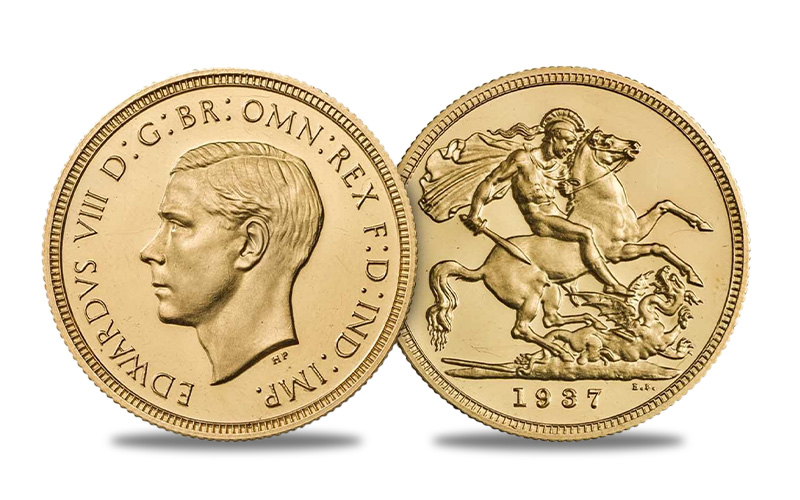
Edward VIII’s reign was brief, but the coins bearing his likeness are among the most legendary in British numismatic history. Traditionally, a new monarch’s portrait faces the opposite direction of their predecessor. However, Edward VIII defied this long-standing convention, insisting on a left-facing portrait, as he believed it was his more flattering side.
Due to his abdication just months into his rule, no gold sovereigns of his reign were officially struck for circulation. Instead, a handful of pattern pieces were produced, making this coin not only one of the rarest coins in the world but also a highly desirable piece of royal history. The coin features Pistrucci’s St George and the Dragon on the reverse, reinforcing its timeless design pedigree.
1703 Queen Anne Vigo Five-Guineas: A Coin of Naval Victory
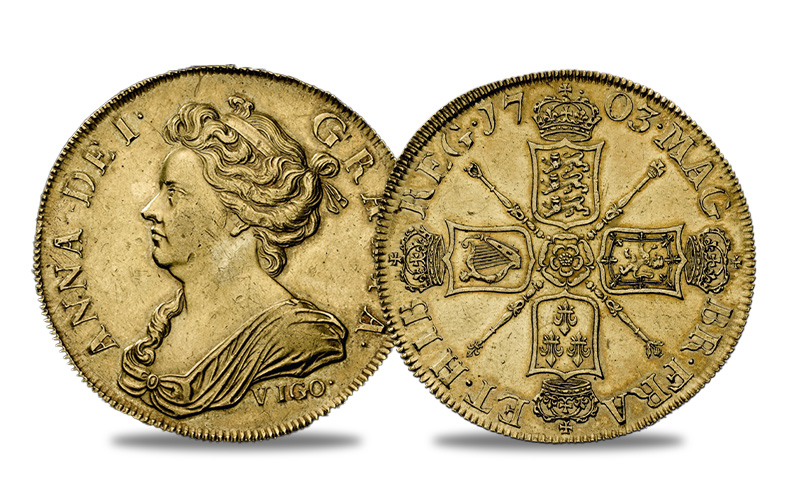
Forged from gold captured during the Battle of Vigo Bay in 1702, the Queen Anne Vigo Five-Guineas is a numismatic relic of British military triumph. After the battle, Isaac Newton, then Master of the Royal Mint, ensured that the recovered gold was used to strike coins that would commemorate the victory. Queen Anne herself decreed that these coins would immortalise the moment for future generations.
Struck in extremely limited numbers—perhaps as few as twenty—this coin remains one of the most desirable and historically significant in existence. The obverse bears the regal bust of Queen Anne, while the reverse showcases a crowned shield and sceptre, embodying the grandeur of an empire at war.
1933 George V Penny: The Phantom of British Coinage
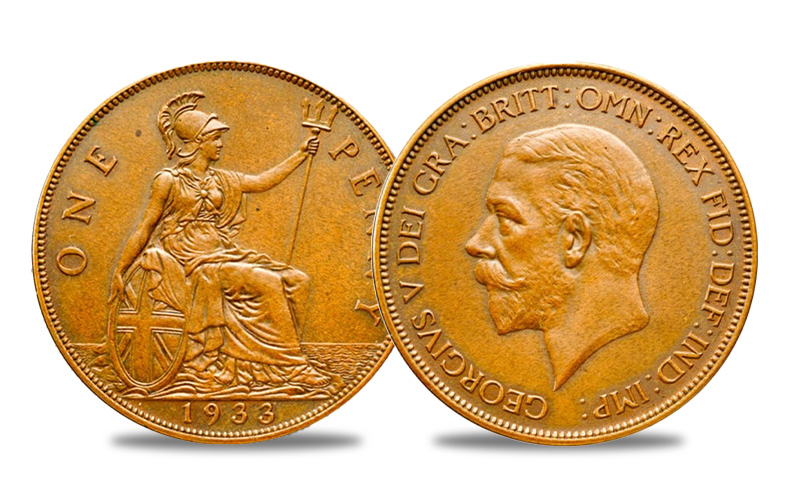
The 1933 George V Penny is a coin shrouded in mystery and exclusivity. With a surplus of pennies in circulation at the time, no new ones were officially minted for general use. However, a mere seven were struck, reserved for ceremonial placements in the foundations of significant new buildings.
Depicting Britannia seated on the reverse and King George V on the obverse, this elusive penny commands astronomical prices when it surfaces in the market, a testament to its extreme rarity and mythical status among collectors.
1839 Una and the Lion Gold £5: A Masterpiece of Coin Art
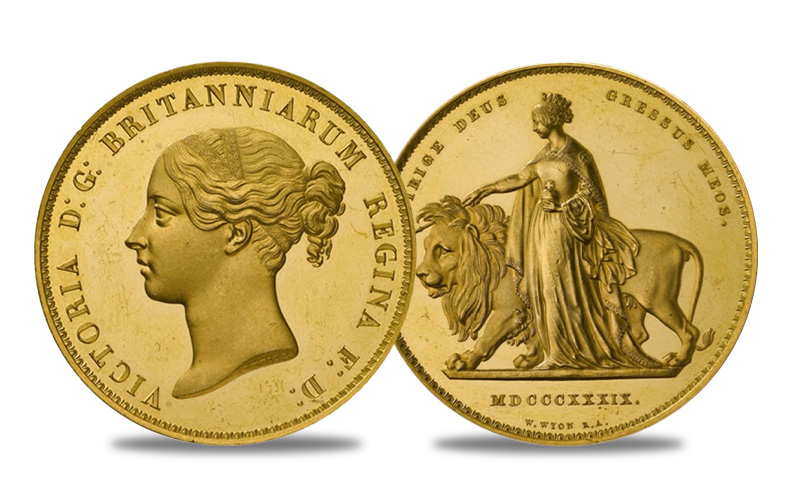
Considered by many to be the most beautiful British coin ever minted, the 1839 Una and the Lion Gold £5 is a stunning tribute to Queen Victoria’s early reign. Designed by the great William Wyon, the reverse portrays Victoria as Una, a character from Edmund Spenser’s epic poem The Faerie Queene, gracefully guiding a lion—a powerful symbol of Britain’s strength and nobility.
With only 300 to 500 originally minted, variations exist, such as those with an inscribed edge, enhancing their desirability. The coin’s breathtaking artistry led to a 2019 reissue as part of the Royal Mint’s Great Engravers series, further solidifying its legacy.
1819 George III Gold Sovereign: The Coin That Nearly Vanished
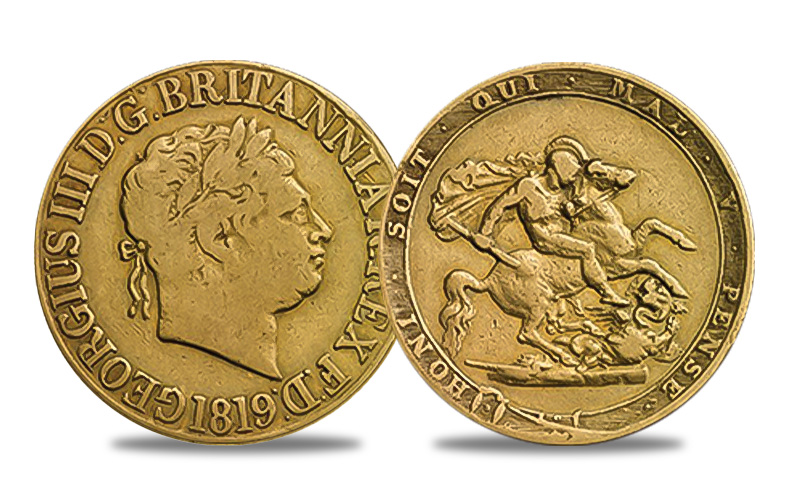
With a mintage of just 3,574, the 1819 George III Gold Sovereign is one of the rarest sovereigns in British history. Most of these coins were shipped overseas, as paper banknotes had become the preferred method of domestic transactions. By 1929, a survey of 105,000 sovereigns in circulation revealed just two examples of this elusive coin, suggesting that fewer than ten exist today.
Bearing George III’s laureate head on the obverse and the celebrated St George and the Dragon design by Pistrucci on the reverse, this sovereign is a holy grail for collectors, a relic from a time when gold was both a currency and a commodity of empire.
Each of these coins tells a tale of power, prestige, and rarity, offering collectors a glimpse into pivotal moments in British history. To own one is to hold a piece of the past—an object of exquisite beauty, numismatic significance, and historical gravity. In the world of rare coins, these treasures remain eternally sought after, a testament to Britain’s enduring legacy of coinage craftsmanship and royal heritage.